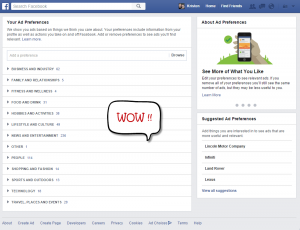
In the past, employee engagement wasn’t a priority for driving the bottom line.
In the 1980s, for example, companies focused on product quality and management processes. In the 1990s, there was a shift to Six Sigma programs and web-based processes like Knowledge Management. However, what many companies now realize is that the most profound investment returns come from recognition programs for employees.
According to Gallup surveys, organizations with high levels of employee engagement showed 27 percent higher profits, 50 percent higher sales, 50 percent higher customer loyalty and 38 percent above-average productivity.
Companies with unhappy employees have greater absenteeism and less productivity. These same companies have a 51 percent higher turnover rate than similar companies with engaged employees. Gallup poll info also shows that only 29 percent of employees are actually interested and loyal; 54 percent are neutral; and the rest frankly couldn’t care less.
In terms of metrics and hard facts, the annual loss to the U.S. economy due to lack of employee engagement is a whopping 350 billion dollars in lost productivity and profits.
The Importance of Employee Recognition
In light of these grim statistics, smart companies are implementing employee recognition programs on a global scale. This is achieved by fostering a climate of appreciation across the organization through a strategic recognition program. Not only do these programs increase profits and productivity, they also reduce the millions of dollars wasted on recruiting and training new employees.
According to Gallup, employees who feel they are recognized and appreciated are half as likely to leave their company. Additionally, engaged employees generate stronger customer connections, higher customer retention, greater profitability, and long and sustained market growth.
Building a Culture of Engagement
So what are the types of practices that foster a culture of employee engagement? The company Globoforce has outlined five key components to such a program:
- Knowing your workforce
- Building confidence into your leadership and your corporate strategy
- Inspiring others to achieve greatness
- Steady communication
- Building a culture of appreciation
Knowing your workforce simply means understanding what motivates them both culturally and psychologically. Building confidence into your leadership means investing in your management team so they have the leadership skills necessary to produce the company vision and values by demonstrating these variables in their own management behavior.
Inspiring others to achieve greatness is simply a feedback loop of recognition and rewards that echo the company’s values by praising those who reinforce the company vision. This approach is proven to inspire employees to do better.
Constant communication raises awareness, increases participation, boosts performance and leads to the final component: the culture of appreciation. The culture of appreciation is one where individuals give employees thanks on both a formal and informal basis.
Globoforce also has five key building blocks to this employee engagement program:
- A global, not just regional, strategy
- Recognition aligned with corporate values
- Executive sponsorship with clear goals
- Opportunity for all participants
- Unlimited choice for rewards
Getting Everyone On Board
A clear global strategy means just that: understanding that employees in each specific region of the world will have unique rewards needs based on geography and culture. The idea here is to cross all global divisions with region-specific motivators.
Recognition aligned with corporate values means that the organization, when praising employees, is actually mirroring the company values, with the end goal of making the value system come alive to all employees.
Executive sponsorship with clear goals is a key component to the system; because usually employee recognition is the very thing left out of most strategic initiatives at a senior level. In this employee engagement model, however, the senior management supports middle management to award activity.
The opportunity for all to participate is to make sure that not only a few select employees are awarded, but everyone. In this model, each and every recognition award acts as a marketing and commination event of sorts, reinforcing core corporate values directly into the workplace.
Unlimited choice for rewards is simply eliminating the “one size fits all” mentality, since such a mind frame misses opportunities to reinforce positive association in different regions based on each region’s specific culture.
The ROI of Employee Engagement
Companies with a real commitment to getting a return on their investments in employee engagement programs can use Globoforce practices and building blocks to start offsetting workforce apathy and non-engagement.
Certainly, knowing what motivates one’s workforce and providing management with the leadership skills needed to demonstrate the company’s values while inspiring employees to greatness is a sound first step. Additionally, constant communication where employees received both formal and informal thanks will further foster a workplace culture rich with recognition and reward.
The “global strategy” view will insure that employees’ needs are being met, regardless of their location in the world. Aligning the praise with the corporation’s values will provide the much-needed experiential component to the program, so that employees see that the company “walks its talk.” Senior level engagement is also critical, since these executives can keep the middle management on task.
Finally, when all employees can be recognized, and recognized in a manner befitting their specific culture, the odds of the employee engagement program providing an actual investment return increase.
(213)





